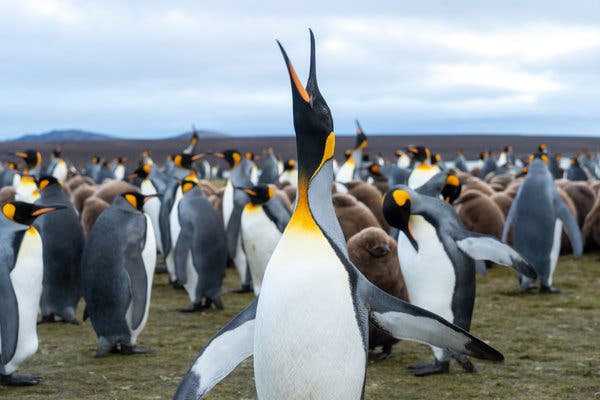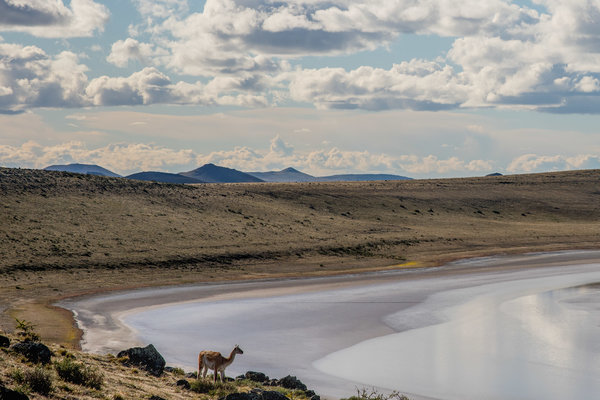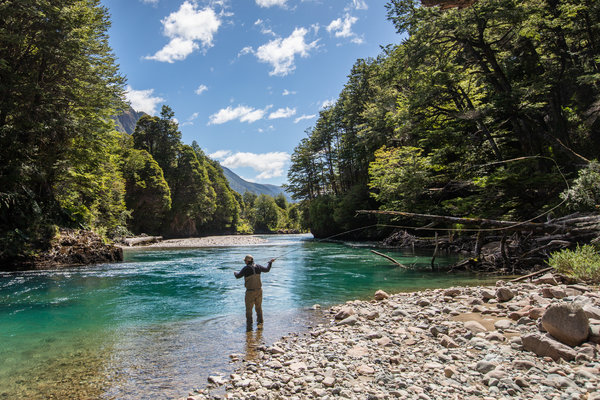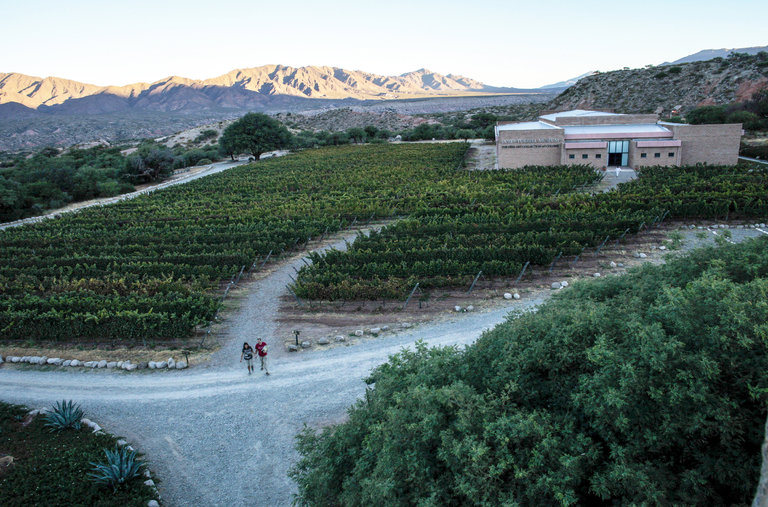
CreditSebastian Modak/The New York Times
Our columnist, Sebastian Modak, is visiting each destination on our 52 Places to Go in 2019 list. Before the Falklands, he took an arduous journey to Costalegre, Mexico.
For an archipelago just 350 miles off the southeastern coast of Argentina, the Falkland Islands, also known as Las Islas Malvinas, are maddeningly difficult to get to. There’s just one commercial flight a week from Santiago, via Punta Arenas, Chile, along with a twice-weekly, 18-hour trip on a British Royal Air Force plane from an air base outside Oxford. In the winter months, when I visited, the islands’ position on the southern edge of the Atlantic Ocean, only 850 miles from the Antarctic Circle, adds more problems: dense fog, low clouds and turbulence-inducing rotor winds that shut down the airport at Mount Pleasant, a British military base, for days at a time.
Because of one missed flight connection in Brazil, it took me two weeks to get to the Falklands — and two extra days of successive cancellations to get out.
The relatively few visitors who come to the Falklands tend to arrive in the Southern Hemisphere’s summer, when the islands are teeming with wildlife — five species of penguins, elephant seals and dense colonies of albatross. On some cruise days, when ships stop by the most developed island, East Falkland, on their way to Antarctica, the population of the island’s capital, Stanley, about 2,500, more than doubles.
The appeal then of visiting just a couple of weeks after the winter solstice is the feeling of profound remoteness, magnified by the absence of cruise ship day-trippers. Over the course of nine days, I only encountered three other people who were on the islands as tourists. And as I wandered the streets of Stanley, many Falklanders’ first question was, “What are you doing here now?”
CreditCreditBy Sebastian Modak
Face to face with the fluffiest of penguins
It’s not just that the Falklands are especially inaccessible in the winter; travel within the islands is also extra difficult. Paved roads are few and far between, and the four-wheel drive tracks that crisscross the islands are sometimes rendered impassable by mud and ice. Winters get so rough that even three of the islands’ five penguin species ditch town for warmer climes. In fact, in the winter, the only way to see the animals in large numbers involves a helicopter trip.
So on one clear afternoon, I buckled myself into the shotgun seat of a single-engine Robinson R44 helicopter at Stanley Airport and set off for Volunteer Point, on East Falkland’s eastern coast. Just a few months ago, this would have been impossible: Falklands Helicopter Services, a family-run business, launched in March, offering an easier way to get out to one of the islands’ most awe-inspiring stops. (Its new flights were one of the reasons the Falklands made the 2019 Places to Go list.)
A short walk from where the helicopter landed, I came face to face with the largest king penguin colony on the islands. More than a thousand breeding pairs huddled together near a white-sand beach, occasionally lifting their beaks in the air to let off rapid-fire calls. With jet black heads decorated with apostrophe-shaped shocks of orange, the three-foot-tall birds give off an air of majesty that kicked the air out of my lungs. But if the parents are all regal dignity, the offspring are the embodiment of awkward.
The fluffy brown balls, two feet high, alternated between cuddling up to their parents and running in circles with the energy of 4-year-olds right after a bowl of sugar-bombed breakfast cereal. They sang while flapping their wings, as if still unconvinced that they can’t fly.
All rules of engagement with wildlife — keep your distance, don’t interact — went out the window as the 7-month-old chicks cautiously approached me and the three other human visitors. One pecked at a glove our pilot had momentarily put on the cold ground. Another made eye contact with me, waddling up until it was a foot away. Then it abruptly turned around, cried out and barreled into a friend before steadying itself and running back to its parents.
I was told that during the summer months, this area sometimes has to be roped off because of the number of tourists. But we could wander the perimeter of the colony freely, watching as parents fed their young, and at least one pair seemed to be chastising their cheeky kid for getting too close to those other strange upright creatures.
The scope of solitude
To fully grasp the remoteness of the Falklands, it’s best to see them from a few hundred feet up.
That’s why I also spent a morning in the co-pilot seat of a Britten-Norman Islander plane, one among the handful of light aircraft that make up the fleet of the Falkland Islands Government Air Service. F.I.G.A.S. offers an indispensable service to Falklanders, connecting Stanley, where the vast majority of people live, with “camp,” what locals call the rest of the mostly undeveloped land. Visitors can book a “Round Robin” flight with F.I.G.A.S., accompanying the pilot on an island-hopping trip to deliver people, mail and supplies to remote settlements.
“All you really need for an airfield is a wind sock and a shack,” explained my pilot, Tom Chater, who also flew the helicopter out to Volunteer Point.
Between each landing were huge swathes of treeless wilderness. Empty plains abutted rocky mountains that seemed to be dragging thick clouds toward them. Stone runs, eroded boulders cascading down valleys, looked like the work of angry giants. We flew over white sand beaches and turquoise water that would not be out of place in the Caribbean, the kelp forests offshore looking, from above, like coral reefs. Flying low over narrow straits, we saw sei and southern right whales, shooting plumes of ocean spray into the sky.
Only occasionally did we fly over any sign of human life: farms, surrounded by miles and miles of open plains; narrow mud tracks made over the course of decades by the passage of Land Rovers; shearing sheds near the water, dating from a time when the ocean was the only way to transport wool between islands.
When I explored East Falkland overland, the impression was similar. I traveled out to settlements like Darwin, 60 miles from Stanley, where the official population is seven although one of the residents told me it’s actually more like five. I walked across the Bodie Bridge, the southernmost suspension bridge in the world, a title that isn’t going to last. Connecting nothing with nothing, it’s been long abandoned, and wind and salt have taken their toll. Rust covered broken segments of metal, and the bridge creaked ominously with each step.
For big city people like myself there’s a fascination that comes with places like the Falklands. It’s not just the sense of space — there’s so much of it — but the way of life that feels so foreign. Being there in winter allowed me to pretend I was living the same, slow day-to-day as the islands’ residents. When sideways rain and biting wind made long walks impossible, I spent hours in the cozy pubs of Stanley, where music from the 1980s blared over the speakers. I eavesdropped on conversations about how the Falklands were faring in the global sheepshearing competition that was taking place in France, town gossip about who had left for the winter and who had come into town, predictions about the weather. No one looked at their phones.
If you go
-
There are no A.T.M.s in all of the Falkland Islands. Not a single one. Bring British pounds if you can, or stacks of United States dollars, euros or Chilean pesos to change at the one bank in Stanley (open Monday through Friday). Some places, including the bank, will let you get a cash advance with a credit card, but get ready to pay big fees.
-
Internet and data connectivity are extremely limited. I was shocked at the prices for dial-up-speed Wi-Fi, even at hotels, and straight up floored when I found out how much residents have to pay for monthly packages. Also note that the Falklands is outside the roaming coverage of most American cellphone providers. Get ready to use landlines (remember those?) or buy a local SIM card.
-
If you, like most travelers, are coming in the summer, book excursions and lodging in advance. Hotels are scarce — the Malvina House, where I stayed, is one good option — and some of the lodges in the countryside are booked up a year ahead. I suspect that, as tourism grows, more beds will become available, but for now it pays to plan ahead.
Fresh scars
As an outsider experiencing the Falklands’ emptiness, it was hard to fathom that almost 1,000 people lost their lives in a war over the islands’ ownership. In 1982, acting on a long-held territorial claim, the Argentine government — ruled by a military junta at the time — sent troops to the islands. The British responded by calling in a task force, and over the course of 74 days, the pristine islands erupted in violence.
The war ended with Argentina’s surrender, but the South American country still claims sovereignty over the islands, which it calls Las Islas Malvinas. The British government and, according to a 2013 referendum, 99.7 percent of Falklanders, consider the islands an overseas territory of Britain.
Almost every conversation I had with a local came back to the war at some point. Those who lived through it bookmark events with “before,” “during” and “after” the war. Those who didn’t still talk about it with nationalistic passion. Some of the people I spoke to felt strongly about their relationship with Britain — self-governing but still very close to it — others were cautiously optimistic about a future where the dispute could be laid to rest, but what I didn’t find was indifference.
Leona Roberts, 47, a member of the Falklands’ Legislative Assembly, said, “Argentina looks at the Falklands as a piece of their soul that’s been ripped out — so it’s very emotive and very difficult to reconcile that with what we see as the reality: that we’ve always been the resident population and have built this place from scratch.”
Wondering if there could be a generational gap in opinion, I also spoke to Ms. Roberts’s son, Nick, a 24-year-old who recently returned to the islands after spending eight years in Britain.
“Being someone from a country so small, I definitely feel like I have a responsibility to put a certain message out there sometimes,” Mr. Roberts said. “But it’s not like I’m worried that ’82 will happen again — I think we’ve moved past that and can have a better future together.”
When asked if he identified more as a Falklander or a Brit, Mr. Roberts’s answer was unequivocal: “Both.”
Reminders of the war are everywhere. A memorial to the British soldiers who lost their lives stands in Stanley, in front of a bust of Margaret Thatcher, the prime minister at the time. Far away from the capital, in the middle of an empty field, is a cemetery for Argentine soldiers, white crosses decorated with flowers and wreaths. Many of those soldiers still haven’t been identified; their graves are inscribed with the words, “Soldado Argentino sólo conocido por Dios” (“Argentine soldier only known by God”). At least one wreck of an Argentine helicopter lies by the side of the road, untouched; craters from mortar shells pock the otherwise untouched landscape; and minefields are cordoned off by barbed wire.
For a Falklander, it would be impossible to forget even if they wanted to.
Stranded in the South Atlantic
There’s no doubt that tourism is on the up in the Falkland Islands. Another weekly flight, this one from São Paulo, Brazil, is set to begin in November, making trips for those not on cruises more feasible.
There’s no chance of it ever being a major destination though — it’s far too out of the way. You feel it on the journey over but also once you’re on the ground. The internet is terrible and bandwidth is as valuable as gold; bananas in the supermarket go for a dollar a piece. Despite being just an hour ahead of New York City, it was the farthest I’ve felt from home so far on this trip.



The day I was supposed to leave, the weather took a nasty turn and my flight was canceled — and then canceled again the following day. A tribe of stranded travelers began to form as we awaited news about the flight. Among them were a group of Uruguayans in town for shipping-related business, a British aviation physician and David Greene, co-host of NPR’s Morning Edition and one of the three other tourists on the islands.
We waited for the weather to clear. David and I went on a Stanley pub crawl — as in we visited all four of them — on a Saturday, when the bars become packed and afterparties continue until the early morning. Some of us resorted to going to daily screenings at the new — and only — movie theater in town (I saw “Rocketman” and “Avengers: Endgame”). I planned my days slowly; errands like buying a T-shirt or mailing postcards became landmark events. I made new friends.
Consumed by a sense of total isolation, I leaned into the rare feeling of being off the map, stuck somewhere and part of a small community of travelers.
Despite the frustrations of all the cancellations and delays that surrounded my trip to the Falklands, I don’t think I’d have it any other way. It’s comforting to know that there are still places that take a serious effort to get to — and to leave.







